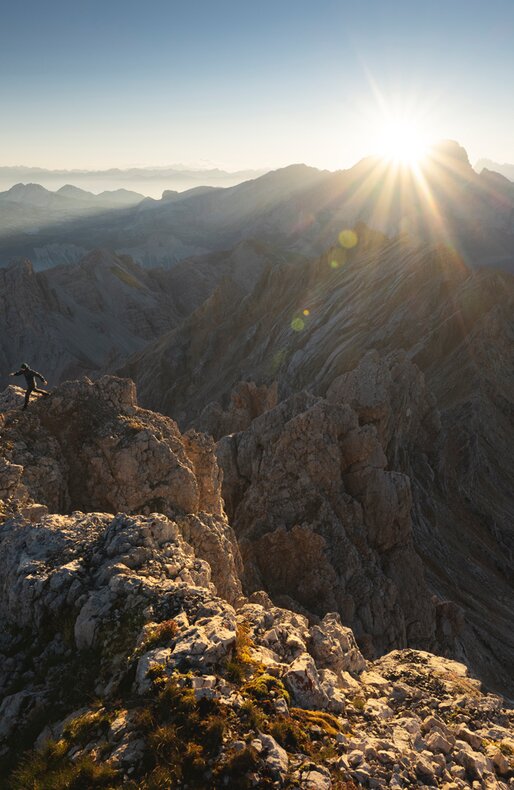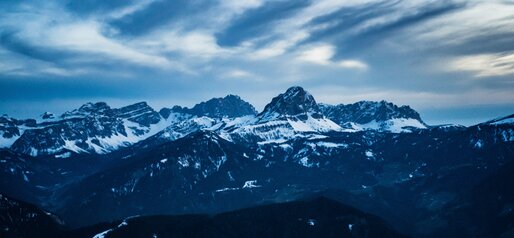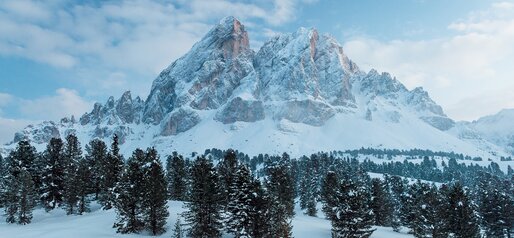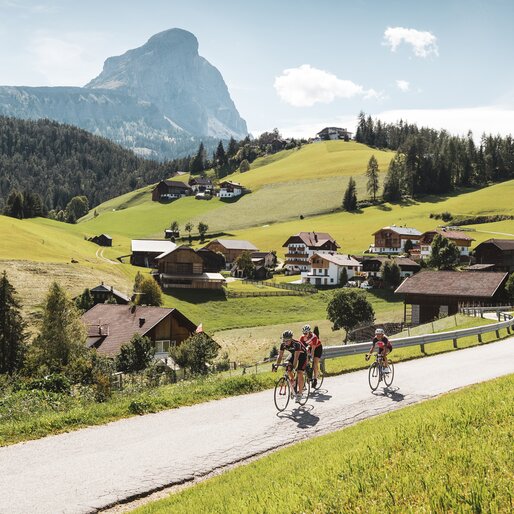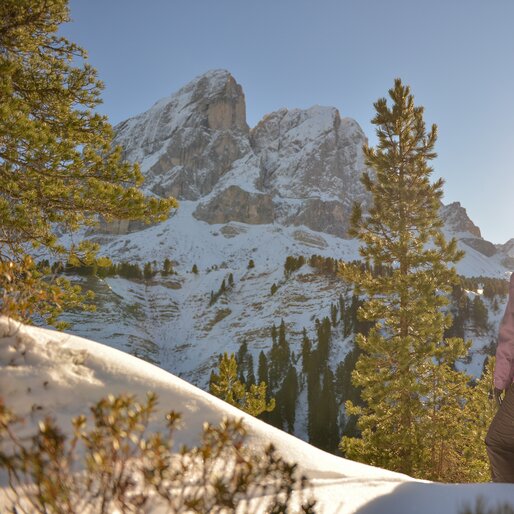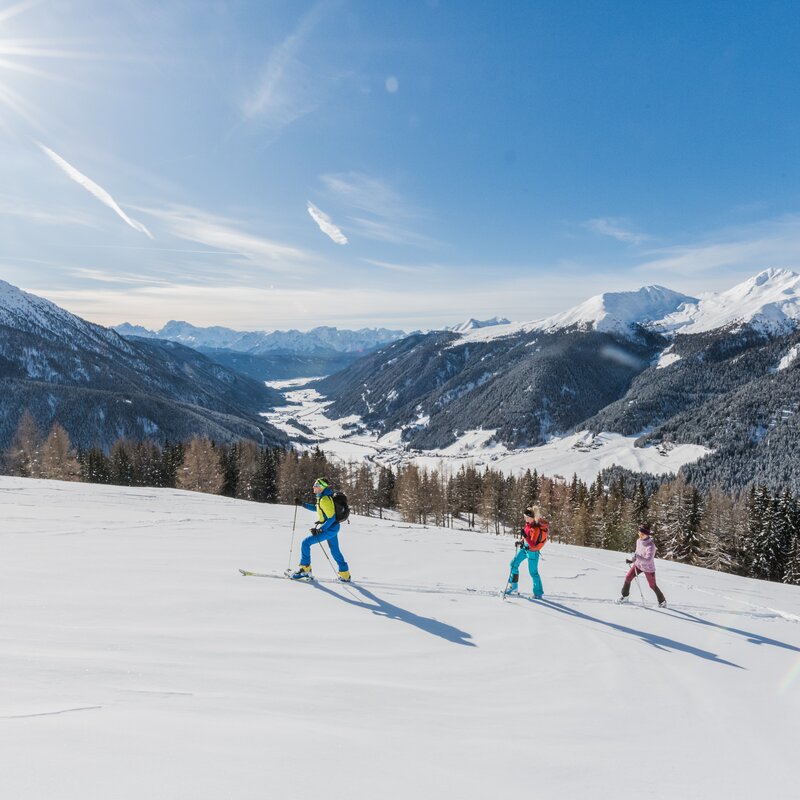

Countless sagas and legends have entwined themselves around the pale peaks. And only those who have seen the Dolomites with their own eyes and felt their rock with their own hands know why. The saga of the dwarf king Laurin and his rose garden turned to stone, of the Fanes princess Dolasilla, or of the Schlern witch are poetic attempts to capture the concentrated beauty of these bizarre cliffs and towers, the powerful blocks of stone and sharp ridges.
Dolomiten, Dolomiti, Dolomites. German, Italian, Ladin. The name of the famous mountains changes slightly, depending upon which of the three linguistic groups in South Tyrol-Südtirol is telling about them. But the pictures of the Catinaccio-Rosengarten, Sciliar-Schlern, Odle-Geisler range, and Tre Cime-Drei Zinnen take hold of every head and every heart equally: as a boldly formed wonder of nature that is bursting with charisma.
The chain of the Dolomites is bordered on the north by the Val Pusteria-Pustertal valley and on the south by the Valsugana in Trentino. In the west, the Isarco Valley and the Adige Valley separate the pale peaks from the Val di Non-Nonsberge and the Sarentino-Sarntal Alps. The unique landscape of the Dolomites is the subject matter of impressive nature parks which present the flora and fauna in a protective manner.
